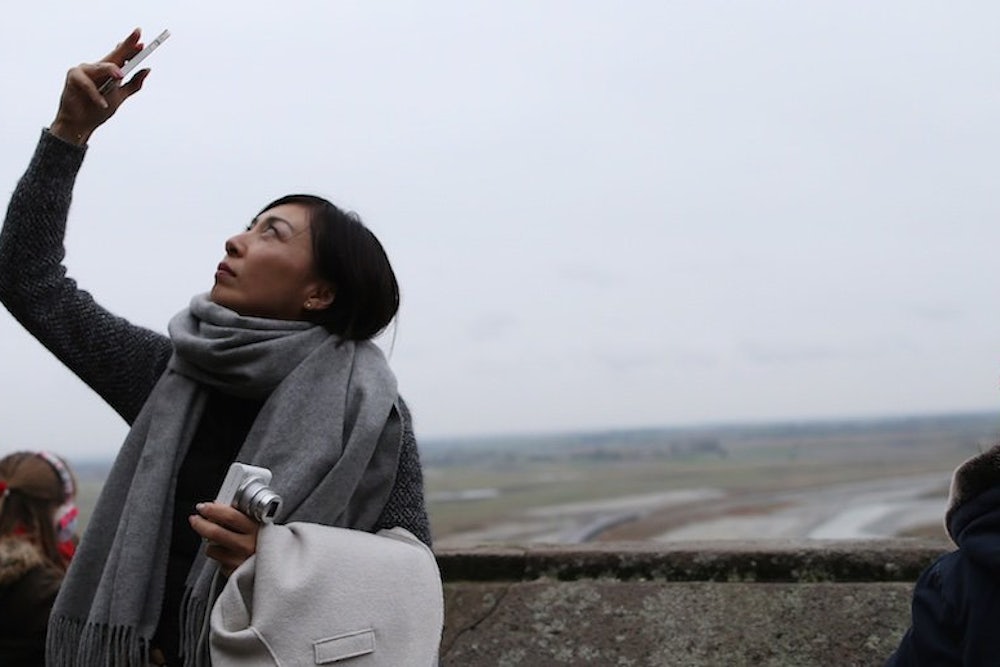In Reclaiming Conversation, a new book that argues technology deprives people of their fundamental need for face-to-face interaction, scholar and MIT professor Sherry Turkle raises familiar concerns. As a psychologist and author whose later career has consisted mostly of questioning the alienating effects of screens, Turkle suggests that tech leads us to constantly seek stimulation and connection, which she says is to the detriment of conversation or quiet introspection.
It is a contentious argument—if a common one—and rests on the shaky idea that what we do through our phones is somehow less profound or connective than what we do offline. Making matters especially confusing is that this worry has arisen in parallel with another, seemingly opposite trend: praising solitude. You’re just as likely to come across writing about the rise of solo dining or travelling alone, praising disconnection as a reprieve from the rush of our workaday world. On the one hand is the idea that we can't be alone, and on the other, the sense that we are finally learning to be comfortable with it.
But the contradiction comes from the same phenomenon. We are doing more things alone precisely because of technology: Our new capacity to document and share means we’re never quite alone.
The smartphone and its capacity for ambient intimacy—the term coined by writer Clive Thompson to mean a comforting, vague awareness of others—has changed the nature of solitary activity. Sitting alone, one can easily communicate with friends, using a variety of modes (voice, text, images, video, etc.) to connect with those not present. I have often spent a wintry evening alone at a bar, stitching myself into a virtual social space on Twitter or Facebook, lines of light connecting points in New York, Toronto, and San Francisco to my barstool.
To take a photograph of a meal, to write a tweet, or to post status is to envision an audience. It assumes a recipient and produces a kind of outwardness, an awareness of the other. Even when we document for ourselves, we embrace that outer gaze by keeping our future selves in mind—they’re the ones who will be looking back at our photos or writing. That is the promise of social media: to show the process of making ourselves as an ongoing performance.
To be alone with technology is therefore to be not quite alone, not quite disconnected. This is a profoundly ambivalent situation, one not accounted for by either Turkle's claims of technology’s capacity for corruption or Silicon Valley's line that tech will save us. Solitude and loneliness mean something new. If a smartphone means that being physically by yourself no longer automatically implies being alone, then solitude is now a choice. Loneliness isn’t.
Trends in urbanism, modern capitalism, and changing social relations have increased the number of people feeling lonely, which has perhaps intensified the desire to connect with others, making an entirely disconnected solitude seem more threatening—a study from 2014 suggested that one quarter of people don't have someone close to confide in. For some, doing things solo is a reprieve from over-connection, a chance to catch one's breath; for others, solitude is a worrying modern phenomenon that cuts people off from real intimacy.
Solitude, then, is either another way to deepen relationships or a profoundly alienating force. But this obscures the actual question: Since technology can both sincerely connect, and yet be bound up in economic and societal processes that can themselves isolate, what happens when? And to whom?
But perhaps this splits too many hairs. The real distinction is between solitude and loneliness. Solitude is welcome, intentional, a kind of healthy inwardness—it’s a chance to reflect. Loneliness, by contrast, is solitude plus anxiety with no end in sight. It is a yearning for the kind of connection that Turkle claims we have too much of.
Canadian journalist Ramona Pringle writes about how our affection for technology is predicated on its function as a social tool—that "we are not addicted to technology, we are addicted to each other." When we crave solitude, we don’t have to disconnect because using technology can be solitary too; the question is whether we use it to look out or look in.
